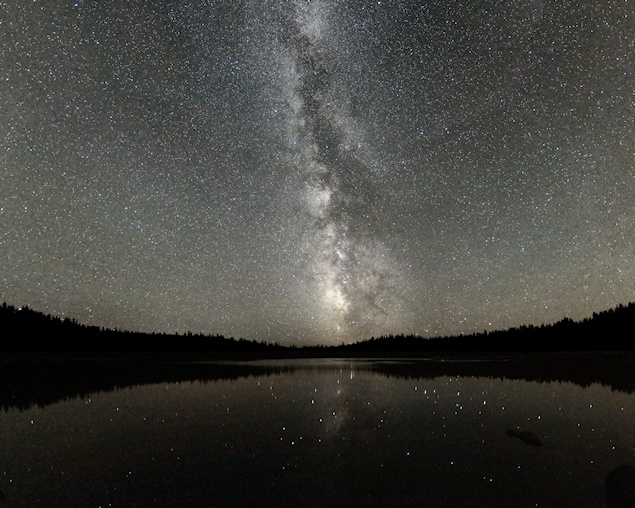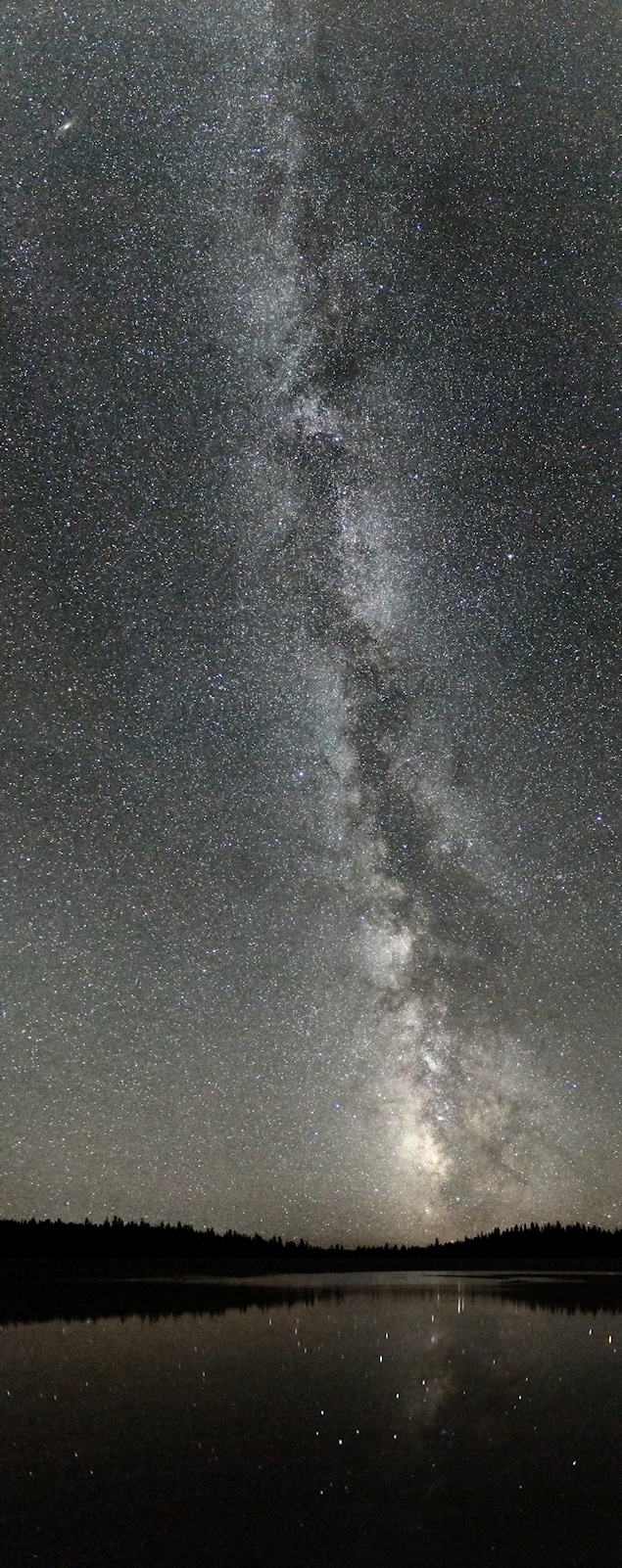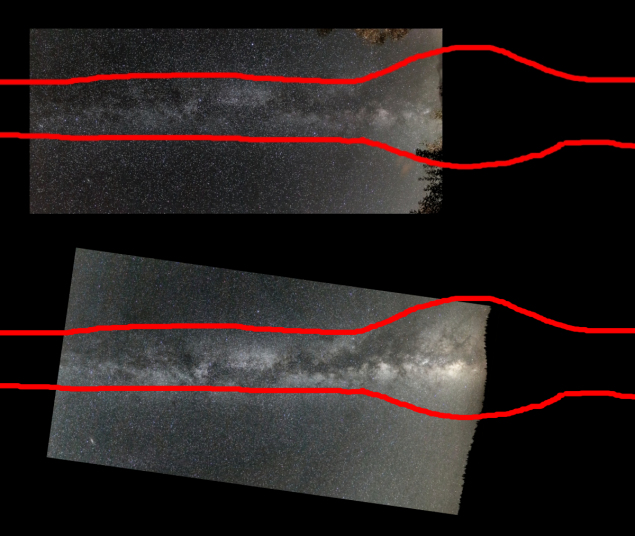
In Living on the Edge, we explored what it means to be living near the rim of the Milky Way galaxy. Short answer: we are gazing out upon the universe with our own galaxy dominating the whole sky -- all 360° of it. This blog entry is an update on the "gazing" part.
Recently we camped at North Twin Lake in Central Oregon. It was a glorious moonless, dark-sky view of the Milky Way over a mirror-smooth lake that reflected stars and even the galactic disk itself. Here is a photo showing the whole vista as the Milky Way stretched up into the sky.

Of course that tiny rendition -- while it nicely shows the whole view at one glance -- doesn't effectively show how many individual stars are visible on a moonless night in a dark-sky location. Well actually, individual stars that would be visible, if only we had eyes that could see dim pinpoint objects. Granted, we can see many stars with the naked eye, but those are only the relatively bright ones. There are many, many, many more stars that we can't see without help.
Fortunately, we have time-exposure photography (details at the end of the blog entry). Here is a bigger view -- can you count the stars? Let me know when you get to 50 billion; you'll be about halfway there. Notice that the neighboring Andromeda galaxy is visible in the upper-left -- it has a trillion stars to tally.

If we could actually see the Milky Way this well every time we went outside at night -- like we can clearly see the Moon without photographic aids -- I wonder how many songs would have been written about the awesome spectacle?
Fly Me to the Milky Way
There's a Milky Way Out Tonight
Allegheny Milky Way
Milky Way Glow
Milky Way Light Becomes You
By the Light of the Silv'ry Milky Way
How High the Milky Way
Milky Way Light Cocktails
Milky Way River
There's a Milky Way Out Tonight
Allegheny Milky Way
Milky Way Glow
Milky Way Light Becomes You
By the Light of the Silv'ry Milky Way
How High the Milky Way
Milky Way Light Cocktails
Milky Way River
*****
As promised, here are some technical details on the photos above. They are based on a 40-shot composite covering most of the sky, stitched with Microsoft's Image Composite Editor (ICE). Each frame was taken at f/3.5 and ISO 6400 for 15 seconds -- just long enough to "see" dim stars yet is sufficiently quick to prevent star trails. The horizontal crop is 94 megapixels; the top of the photo is the zenith, i.e. directly overhead. In the 70-megapixel vertical crop, the top of the photo is the other end of the sky, i.e. horizon to horizon (minus the trees, which would have shown as upside-down). Of course, both photos are downsized for the blog post; let me know if you'd like a full-resolution copy.
*****
We had great fun on that trip to North Twin Lake. During the day, we watched our grandkids and dog swimming joyfully in the crystal clear water of the volcanic crater. The fun did not end at sunset -- evening started with a beautiful crossing of the super-bright International Space Station overhead. We even got our campsite neighbors and their kids excited about that event: "There are seven people up there!" (Actually there were only six; I looked it up later.) Then more stars came out, with an occasional meteoric remnant from the Perseids. But for me, the main show that night was seeing the Milky Way spreading out its splendor above the mirror-smooth water.
*****
Update, January 20, 2016: In Living on the Edge, I said: "Let's tip [the photo] sideways and see how it fits into the galactic context." Inwardly, I had been a little disappointed about how little of the galaxy's center bulge showed before being interrupted by the pesky horizon.
The North Twin lake photo shows more of the Milky Way than did the earlier Jackson, Wyoming photo. So, I repeated the exercise of tipping the photo sideways then fitting it into the galactic context. Here is the result, with the Jackson version shown first for comparison.

That bright spot is actually the galactic core. So, as we were standing on the shore of North Twin Lake, we were gazing out upon the very center of our galaxy -- along with its reflection in the smooth water. Cool, huh?
